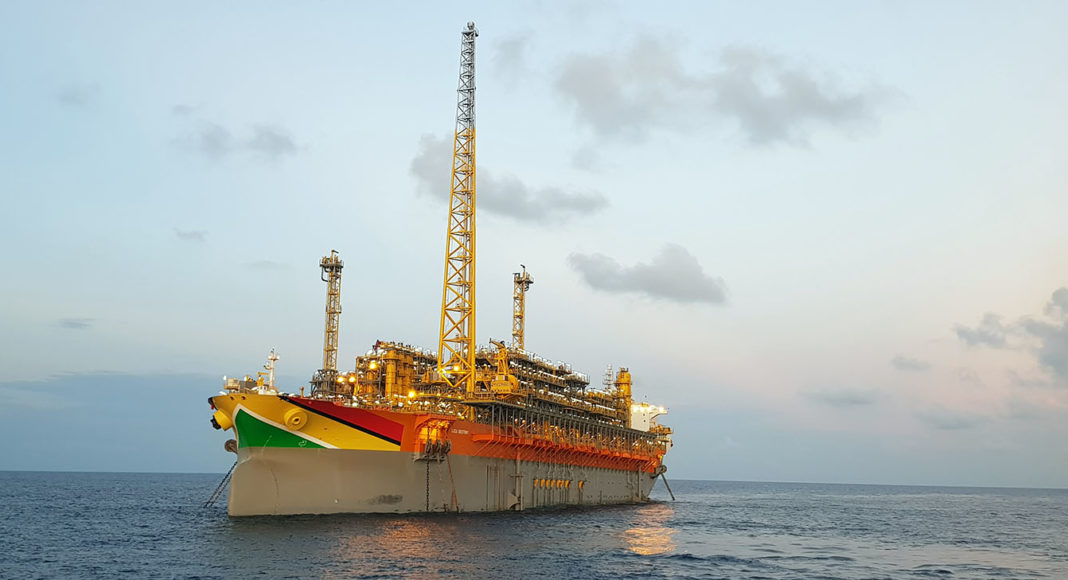Global oil reserves are not being replenished with enough conventional resources for future demand of oil and gas and this is set to create a major shortfall through 2050 despite lower future demand due to the coronavirus pandemic and the accelerating energy transition.
In a new bombshell report released this week, Norway-based Rystad Energy said unless exploration speeds up significantly and capital expenditure of at least $3 trillion is put to the task there just will not be enough oil to meet the future needs of the world.
“To meet the global cumulative demand over the next 30 years, undeveloped and undiscovered resources totaling 313 billion barrels of oil need to be added to currently producing assets,” Rystad Energy said. It calculates that to match this requirement, exploration programs will have to discover a worthy-to-develop resource of 139 billion new barrels of liquids by 2050, an impossible task if this decade’s low exploration activity levels persist.
In Guyana, ExxonMobil, operator of the prolific Stabroek block, has made 18 discoveries since 2015 amounting to approximately 9 billion barrels of oil equivalent resources with significant room remaining for exploration at Stabroek in addition to other blocks offshore the South American country.
“You have to discover new resources for the world to have enough oil and gas 20 years from now,” said John Hess, CEO of Hess Corporation, a 30 percent stakeholder in the Stabroek block. “So, we made the conscious decision when oil prices went down the last time in 2014 that we would stay in exploration.”
Hess made the comments during a recent interview with Wood Mackenzie. He pointed out that capital investment for oil and gas companies is the biggest challenge going forward with exploration being a major part of that mix.
“The world used to spend a hundred billion a year on exploration to find new resources. That number right now is about 20 billion dollars. So, we’re not filling the pipeline with enough conventional resources for future demand of oil and gas,” Hess said.
According to Rystad Energy, the exploration target is high because not all existing discovered volumes are profitable to develop. In theory, the total undeveloped supply would amount to 248 billion barrels of oil between 2021 and 2050. “However, when we dive deeper into these discoveries and look at their discovery decade and current status, we find that about 74 billion barrels are highly unlikely to materialize and need to be replaced by new discoveries,” Rystad Energy said.
Looking at the global conventional exploration potential, there are two main sources for these new volumes: further appraisal of existing fields and resources, and new discoveries.
“The first source includes projects in their early production stage, projects under development, and unrisked volumes in discovered assets. We expect that some future exploration activity will lead to reservoir delineation and enhancement of resource estimates, while technological improvements and other secondary recovery techniques will also increase recoverable volumes,” the energy research and business intelligence company said.
Ultimately, projects with the lowest cost, lowest carbon intensity and best economics will be the ones to be developed, and this is where countries like Guyana continue to have a significant advantage.
“Advantaged deepwater oil in places like Guyana and Brazil, along with niche LNG – including low-cost greenfield and feedgas backfill at legacy liquefaction projects – will progress,” Robert Morris, a senior analyst at Wood Mackenzie has said.
Already one field – Liza Phase 1 – is under development in Guyana and two more projects – Liza Phase 2 and Payara – have been sanctioned and are set to come online in 2022 and 2024.
“Breakevens for the first 3 developments are in the range of $25 to $35 per barrel Brent, which is world-class by any measure and we now have line of sight on potentially up to 10 FPSOs to develop the discovered resources in Guyana,” Hess said.




